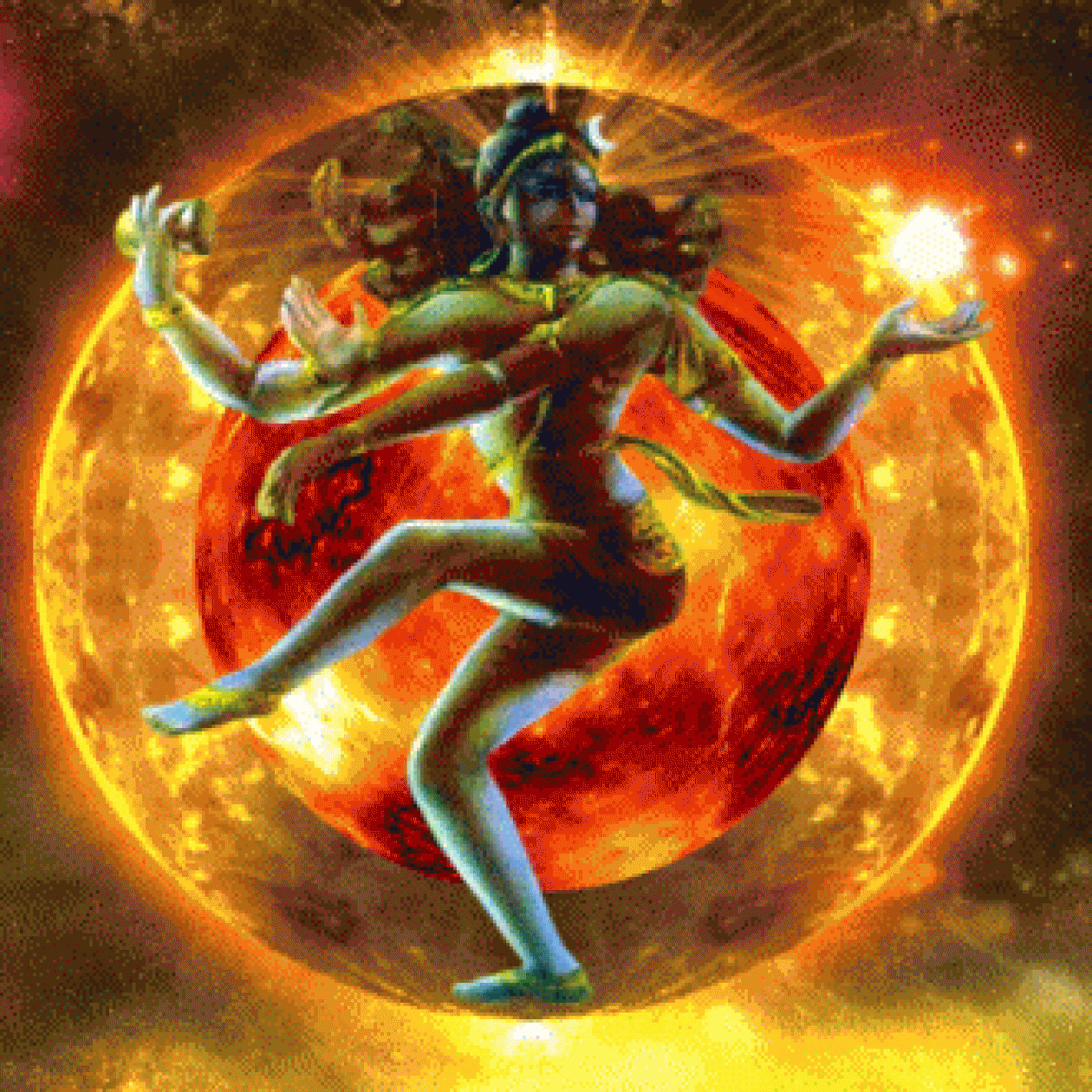Asta Siddhi-8 super power of Hanuman ji

Mahavir and his Ashta Siddhis Navnidhi (अष्ट सिद्धि नौ निधि)
Ashta Siddhis are the eight divine Knowledge which means eight divine powers are: Anima, Mahima, Garima, Laghima, Prapti, Prakamya, Isitva, Vasitva are Hindu religious knowledges in Hanuman chalisa or Ganesh vajana, that gives one complete power over each and everything.
Hindu scriptures say that the people who have complete control over the siddhis can gain power of demigods. Each siddhi governs certain character or certain aspect of nature and mastering each gives one distinct ability unique to other siddhis.
Anima is the first among the ashta siddhis. Mastering this siddhi gives the individual the ability to shrink down one’s body. This siddhi gives only the ability shrink the body; the owner of this siddhi can shrink the body to his own will even at the atomic scale but cannot increase the size of the body. The most notable use of this siddhi was done by lord Hanuman while spying on Lanka in search of mother sita. While spying lord hanuman shrunk his huge body to a very miniature form because of which the demons were unable to spot him.
Mahima one of ashta siddhi siddhi grants the user the ability to attain gigantic forms. It is like anima or it completes Anima siddhi. Anima lets you shrink your body while mahima lets you increase the size of the body even to the celestial level. Lord hanuman used mahima to increase his size and lift sumeru parbat to bring back Sanjivani booti to save Laxman’s life. Another use of mahima siddhi was done by Bahaman avatar of lord Vishnu. In which lord turned his size celestial level and in three steps he covered the entire existence.
Garima siddhi lets user to alter the weight of their body. However, like the relation between Anima and mahima, Garima only allows the user to increase the weight but not decrease it. By this siddhi one can increase his/her weight from little bit to infinitely, to the point one becomes immovable. Angat when going to ravanas court challenged the warriors in his court to move his feet but no one was able to do so because angat used garima siddhi. Another instance was when to control bheems arrogance lord hanuman disguised as an old monkey asked him to lift his tail. However, lord hanuman used garima siddhi so bheem could not lift his tail.
Laghima of astha siddhi is opposite to garima, allows its user to decrease the body weight. This siddhi decreases the weight of the user so much that the user will get the ability to fly. The weight can decrease so much that the individual can be light as a feather and gain levitation. Lord hanuman and various other demigods, demons knew this siddhi and were able to fly in the sky.
Prapti is very different from previous siddhis. While the previous siddhis focused on one’s body prapti focuses on things outside of body. Prapti siddhi gives one ability to instantly get the things they desire. The siddhi users can get anything they desire out of thin air. Various gods, demons, demigods had this ability in the ancient Hindu stories. The gods granted boon by making gifts out of thin air, demons made weapons out of nowhere.
Prakamya siddhi provides wide range of abilities to its user. It allows its user to increase their life length dramatically, teleportation, ability to live underwater. In the general sense prakamya enabels the user to adapt to the circumstances. Various rishimunis, chiranjivis and demigods had this ashta siddhi in the past as they could live under water and extend their lives to exceptionally longg time.
The individual obtaining this ashta siddhi gets the ability to influence the nature as per ones will. When someone attains this siddhi, the earth will move per his/her wish, the sky will rain as one’s demand, the wind will move as his/her sign. Every natural phenomenon will answer to ones will. Various peoples had isitva power, they could make tree grow instantly, rain down immediately and other many things.
Vasitva the last of ashta siddhi allows the user to control other people’s minds. The ability is not limited only to people’s mind but to animal’s mind also. This ability can tame wild animals, mentally disturbed individuals. Various avatars of lord Vishnu could immediately calm enraged animals and individuals using this ashta siddhi.
The highest levels of performance come to people who are centred, intuitive, creative and reflective, people who know to see a problem as an opportunity. Success comes when people act together; failure tends to happen alone. Hanuman is the Prana Shakti that flows within all of us. It is by worshiping Hanuman, it is by meditating upon him, it is by focusing on our Prana that we embark on the journey of self-realization.
This is why he is called Pavan Putra. He is the deity guarding Prana. And consciously watching Prana during meditation is how we still our restless minds, turn inwards and embark on the most wonderful journey that anyone can ever take.
हरि प्रेरित तेहि अवसर चले मरुत उनचास।
अट्टहास करि गर्जा कपि बढ़ि लाग अकास।। (Sunderkand 25)
There is a detailed description about the 7 branches of air in the Vedas. The air that is inside the water has been given a different name in the Vedas and Puranas and the air that is in the sky has a different name. The air that is in space has a different name and the air that is in the underworld has a different name.
The difference in name means that its qualities and behavior are also different. In this way, the description of 7 types of air is found in the Vedas. These are 7 types- 1. Pravah, 2. Aavah, 3. Udvah, 4. Sanvah, 5. Vivah, 6. Parivah and 7. Paravah.
- Flow: The air that crosses the earth and extends up to the Megh Mandal is called flow. There are types of this flow as well. This wind is very powerful and it carries the clouds here and there. It is this flow of air that fills the clouds generated by the sun and heat with sea water, due to which these clouds turn into black clouds and become extremely hot. There are those who make it rain.
- Aavah: Aavah is bound in the solar system. By that the solar system is rotated by being attached to the pole.
- Udvah: The name of the third branch of air is Udvah, which is established in Chandralok. Through this, this lunar circle is rotated by being associated with the pole.
- Convection: The name of the fourth branch of air is Convection, which is located in the Nakshatra Mandal. Due to that, the entire Nakshatra Mandal keeps rotating by being bound to the pole.
- Vivah: The name of the fifth branch is Vivah and it is located in the planetary circle. Through it only this planetary wheel revolves around the Pole.
- Parivaha: The name of the sixth branch of air is Parivaha, which is located in Saptarshimandal. Through this, the Saptarishis travel in the sky, being associated with Dhruva.
- Paravah: The name of the seventh wing of air is Paravah, which is attached to the pole. Through this, the Dhruv Chakra and other circles remain established at one place. There are seven types of gunas of these seven airs which roam in the following places: Brahmalok, Indralok, Space, East direction of Bhulok, West direction of Bhulok, North direction of Bhulok and South direction of Bhulok. In this way 7 x 7 = 49. A total of 49 become Maruts who keep on roaming in the form of gods.
Sage Valmiki refers to Hanuman as “DhIra” in Srimad Ramayana. DhIra seems to suggest as an adjective to one who is brave, courageous, bold and fearless, one who is delighted to go with what the Dhi says is DhIra. Dhi is the highest power a human being possesses and it has its dwelling in the Ajna Chakra (Pineal Gland). Using of this power is the one which differentiates a human from an animal. Everything in life is a lesson. Refusing to learn the lesson means that it will be repeated until the lesson is learned from Hanuman ji.
Nine Nidhis; According to Amarakosha, the nine nidhis are Mahapadma (Divine lotus), Padma (Lotus), Shankha (Conch-shell), Makara (Crocodile), Kachhapa (Tortoise), Mukund (Quick silver), Kund (jasmine), Neelam (Blue sapphire), and Kharva (a Dwarf). The nature and characteristics of nidhis have remained largely unexplained and have not been fully understood. When considered as mines, minerals, earthenware and ocean resources, the nine treasures of Kubera are interpreted as:
- padma (lake in Himalaya with minerals and jewels)
- mahapadma (lake double the size of padma in Himalaya with minerals and jewels)
- makara (Synonym of Padmini, black antimony)
- nila (Antimony)
- mukunda (cinnabar, or quicksilver)
- kunda (arsenic)
- kharva (cups or vessels baked in fire)
- kachchhapa (tortoise or turtle shell)
- sankha (conch shell)
Via Anadi Sahoo
From world wide Hindu temple







